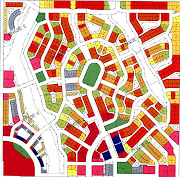Your New Urban Factoid(s) of the Day . . .
88% of us drive to work every day. Of those that drive only 10.7% car pool. That means that over 77% are riding in a car all alone.
Alternative methods of getting to work in the US (in decreasing order) are:
4.7% mass transit [50% of the country's mass transit riders are in only 10 cities]
3.6% no commute at all! They Work at Home! [5.3% work at home in Portland, OR]
2.5% walk to work [13% walk in Boston]
Source: Daily Real Estate News, June 14, 2007
The dense, walkable, mixed use new traditional neighborhood will help that 77% figure drop. Here is the proof from an article entitled, "We Would Use Less Energy Living Closer Together"
The Philadelphia Inquirer wrote:
A 2002 peer-reviewed study by John Holtzclaw and other researchers examined odometer readings from annual government-run vehicles . . . to compare driving patterns across metro Chicago, Los Angeles and San Francisco. It showed that miles driven by an average household dropped by 32 percent to 43 percent as the density of neighborhoods doubled.
In the next 30 years, our country will build 70 million new dwellings somewhere. With urban life emerging as a market favorite, it's looking more as if building a good portion of them in livable, walkable traditional neighborhoods is one of the most convenient - and effective - remedies for the inconvenient truth.
Source: The Philadelphia Inquirer, Thursday, May 17, 2007
The new traditional neighborhood of Leytham (see www.Leytham.com) will offer many design features that should help to reduce total vehicle miles driven. These include a mix of uses so that not every trip for every need will have to be in a car. It shouldn't take a gallon of gas to get a gallon of milk. The mix of uses will also allow some people to work in the neighborhood where they live and simply walk or bike to where they work. Alternate dwelling types such as accessory units (space over peoples' garages or free-standing in their back yards) and live/work units will also permit people to have no commute because their business/work will be in, under or in back of their residence.
Just an incremental increase in people walking or biking to work and working out of their homes can have a dramatic effect on lowering total vehicle miles that a household has to drive. Then, when you add in fewer driving trips for shopping, for recreation, for school, the impact of the new traditional neighborhood is mulitplied for the good. It all adds up to fewer miles driven, less greehouse gasses emmitted, less negative envirornmental impact and a higher quality of life for all.



2 comments:
Nice work, Herb. I'm excited to see this new community come to fruition.
Makes me want to buy a bicycle or move to a neighborhood where I can live and work. :) How are you coming on your hybrid research?
Post a Comment